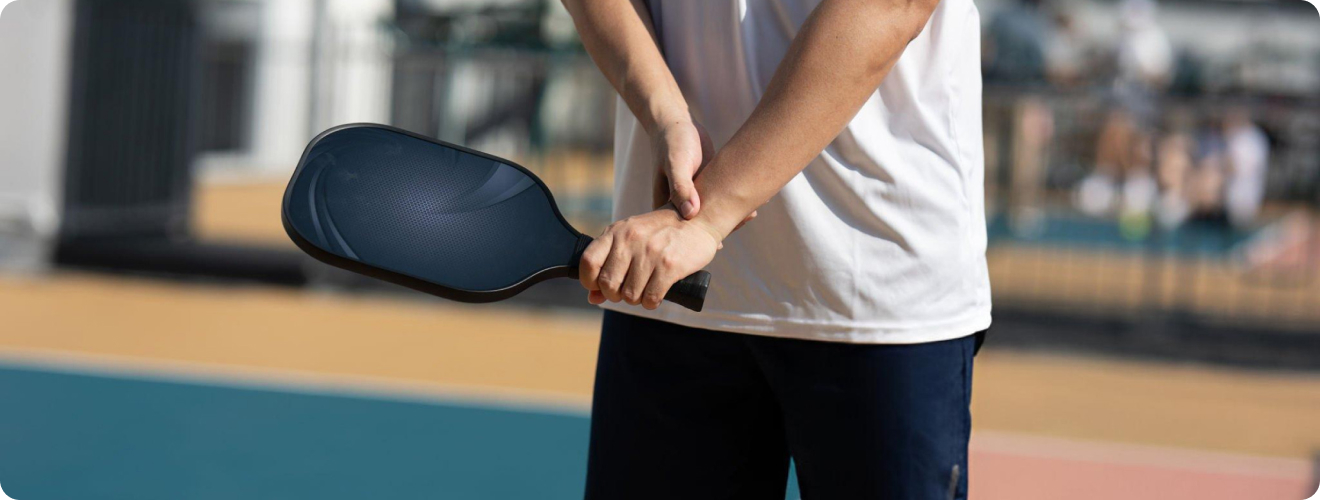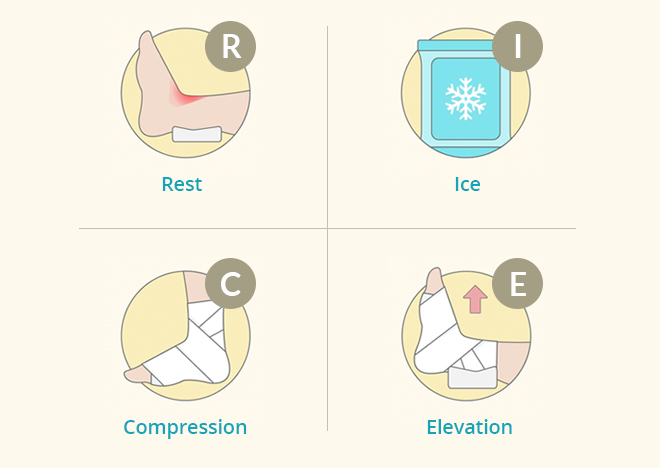


Participation in sports and physical activity offers myriad health benefits, from improved cardiovascular fitness and mental well-being to enhanced social connection. However, alongside the exhilaration of athletic pursuits lies the inherent risk of injury. From weekend warriors to elite professionals, sports injuries are an unavoidable reality, capable of sidelining individuals for days, weeks, or even months, significantly impacting their physical capabilities, psychological state, and overall quality of life. While some injuries are the result of unpredictable accidents, a substantial proportion are preventable through a combination of informed training practices, meticulous preparation, and proactive self-care.
This article aims to provide a detailed overview of prevalent sports injuries and equip you with the knowledge to actively reduce your risk.
Sports injuries can broadly be categorised into two main types:
These occur suddenly, often due to a specific traumatic event such as a collision, fall, or awkward movement. Examples include ankle sprains, muscle strains, or sudden fractures. They are typically accompanied by immediate pain, swelling, and loss of function.
These injuries develop slowly from repeated strain, as the body can’t heal the ongoing minor damage fast enough. They usually start as a dull ache during or after activity and include issues like tendinopathies or stress fractures.
Understanding the factors that contribute to these injuries is crucial for prevention:
These include age, gender, previous injury history, muscle imbalances, poor flexibility, inadequate core strength, biomechanical abnormalities (e.g., flat feet), nutritional status, and underlying medical conditions.
These encompass improper training techniques, inadequate warm-up/cool-down, rapid increase in training load (volume, intensity, frequency), inappropriate footwear or equipment, playing surface (e.g., hard vs. soft), and environmental conditions (e.g., extreme heat/cold).
Let’s delve into some of the most frequently encountered sports injuries:
A sprain occurs when ligaments – tough, fibrous bands connecting bones to other bones – are stretched or torn. They commonly affect joints like the ankle and wrist. Sprains are usually of two types:
A strain involves the stretching or tearing of a muscle or its attached tendon. They are often referred to as “pulled muscles” and are graded similarly to sprains. The common types of strains include:
These are conditions characterised by pain, tenderness, and impaired function of a tendon due to chronic overuse. The term “tendinopathy” is now preferred over “tendinitis” as it reflects a degenerative process more than just acute inflammation.
Here are the common types of tendinopathy:
The knee is a large, complex, and vulnerable joint, prone to various sports injuries including:
These are tiny cracks in a bone, caused by repetitive force or overuse, rather than a single traumatic event. They are common in weight-bearing bones of the lower leg and foot (e.g., tibia, metatarsals) and often present as localised pain that worsens with activity and improves with rest. They are commonly faced by runners, dancers, and military recruits.
A concussion is a form of traumatic brain injury that occurs when a hit or sudden jolt to the head or body causes the brain to move quickly within the skull. This rapid motion can cause the brain to twist or bounce, damaging brain cells and disrupting normal chemical activity. Symptoms vary and may include headache, dizziness, confusion, nausea, light or sound sensitivity, and trouble focusing. Concussions often happen in contact sports such as rugby, football, and boxing.
Pain along the shin bone (tibia), typically on the inner border, caused by overuse and repetitive stress on the muscles and connective tissues surrounding the tibia is known as shin splints. They are common in runners, especially those who rapidly increase training intensity or run on hard surfaces.
Runner’s knee is characterised by pain on the outer side of the knee, just above the joint, often caused by inflammation of the iliotibial band, a thick band of connective tissue running down the outside of the thigh from the hip to the shin. It rubs against the bony prominence of the knee joint with repetitive bending and straightening, common in runners and cyclists.
Let’s talk about prevention now. Preventing sports injuries involves a holistic and proactive approach. Below are some recommended guidelines that are suggested by sports physicians worldwide:
5-10 minutes of warm-up is essential to prepare the body for activity. Start with light cardio (e.g., jogging) to increase blood flow and muscle temperature, followed by dynamic stretches (e.g., leg swings, and arm circles) to improve flexibility and range of motion.
Avoid sudden increases in intensity, duration, or frequency of training. The “10% rule” is a good guideline which mentions not to increase your weekly training volume by more than 10%. This allows your body to adapt safely.
Improper technique places undue stress on joints and muscles. Seek coaching or guidance from qualified instructors to learn and maintain the correct form for your chosen sport. Record yourself to review and correct the technique.
The right kind of equipment can make or break your sports journey. Here are some of the things to focus on:
Incorporate a variety of activities into your routine to work different muscle groups and reduce repetitive stress in one area. Strength and conditioning programmes, focusing on overall muscle balance, core stability, and functional strength, are vital for injury prevention.
Regular stretching, foam rolling, and mobility exercises can improve range of motion, reduce muscle tightness, and correct imbalances. Yoga or Pilates can be excellent additions.
A balanced diet provides the necessary nutrients for muscle repair, bone health, and energy. Adequate hydration before, during, and after exercise is essential for optimal performance and preventing muscle cramps and fatigue.
Muscles need time to repair and rebuild after exercise. Overtraining can lead to fatigue, decreased performance, and increased injury risk. Prioritise sufficient sleep and schedule rest days.
Do not “play through” pain. Acknowledge minor aches or discomfort as early warning signs. Rest, modify activity, or seek advice from a physiotherapist or doctor if the pain persists. Ignoring pain can lead to chronic or more severe injuries.
Be mindful of playing surfaces (e.g., uneven ground, hard courts) and adjust your activity accordingly. Dress appropriately for weather conditions to prevent overheating or hypothermia.
A medical check-up can identify potential risks or areas needing attention before you begin, especially for new intense sports or if you have pre-existing conditions.

Despite best efforts, injuries can still happen. In the event of an acute injury, the R.I.C.E. protocol is a good immediate first aid:
While sports injuries are an inherent part of athletic participation, they are far from inevitable. By thoroughly understanding the common types of injuries and their underlying mechanisms, individuals can significantly mitigate their risk through a comprehensive set of prevention strategies. This proactive approach begins with diligent warm-ups that prepare the body for activity by increasing blood flow and muscle temperature, followed by dynamic stretches to enhance flexibility. Equally important are gradual training progression, ensuring you don’t increase your weekly volume by more than 10%, and meticulous attention to correct technique and form, often requiring guidance from qualified coaches to prevent undue stress on joints and muscles.
Utilising appropriate equipment, including sport-specific footwear with proper support and protective gear like helmets or pads, is also crucial. Beyond the active components, sufficient recovery time is indispensable; muscles need adequate rest to repair and rebuild, preventing fatigue and overtraining that heighten injury risk. Furthermore, listening to your body and acknowledging early warning signs like minor aches rather than “playing through” pain is paramount, and seeking professional guidance from a physiotherapist or doctor when discomfort persists can prevent minor issues from escalating. Committing to these lifelong safe practices is the ultimate key to sustaining an active, healthy, and fulfilling life, enabling you to enjoy the exhilarating world of sport without unnecessary setbacks continually.
Five common sports injuries are:
1) Sprains (such as ankle and wrist sprains)
2) Strains (like hamstring or quadriceps strains)
3) Tendinopathies (including Achilles and patellar tendinopathy)
4) Knee injuries of various types (such as ACL tears and meniscus tears)
5) Stress fractures.
According to available data, ankle sprains are described as “extremely common, especially in sports involving running, jumping, and sudden changes in direction,” making them a very prevalent sports injury.
Sources:
Spread the love, follow us on our social media channels